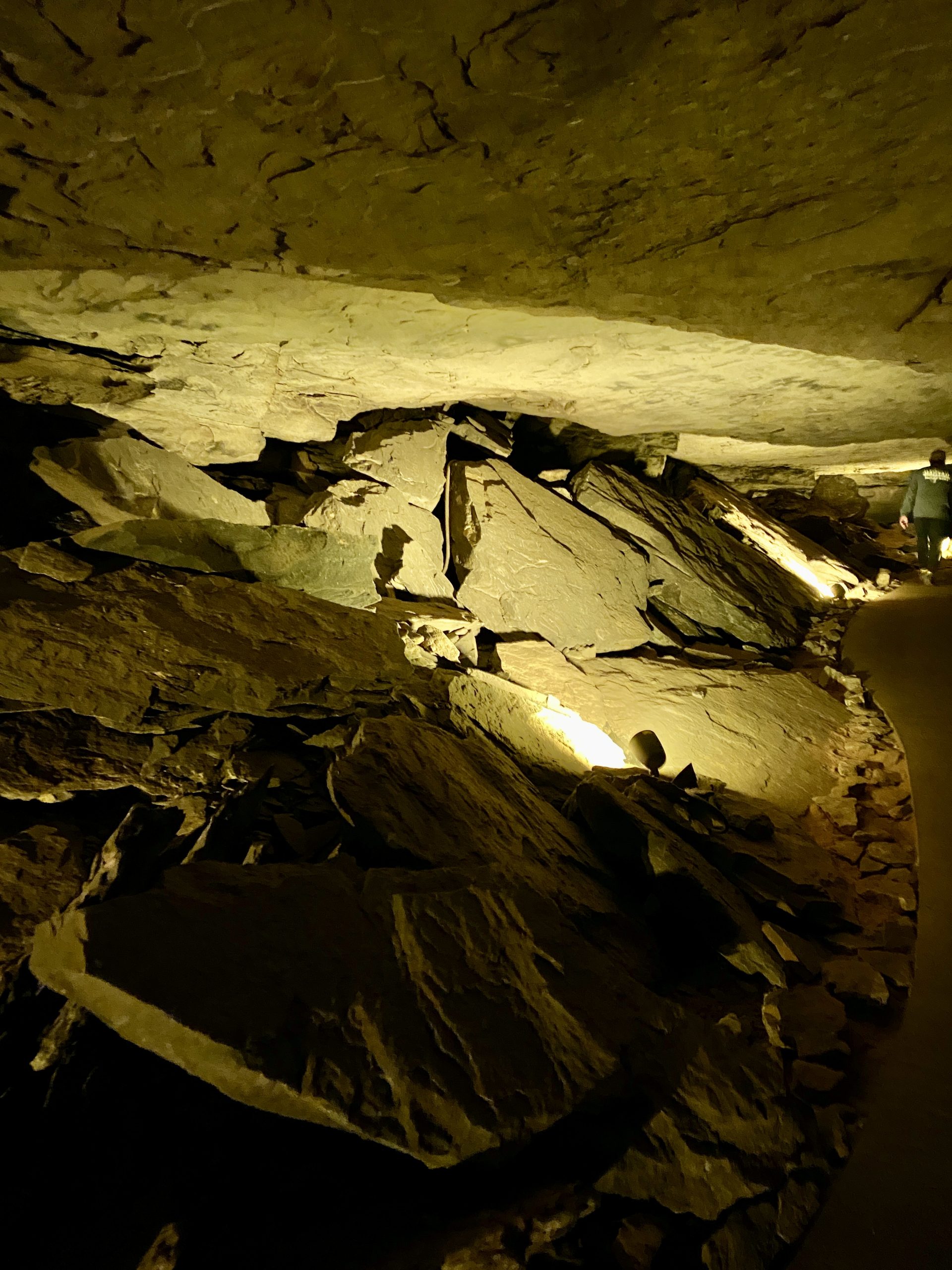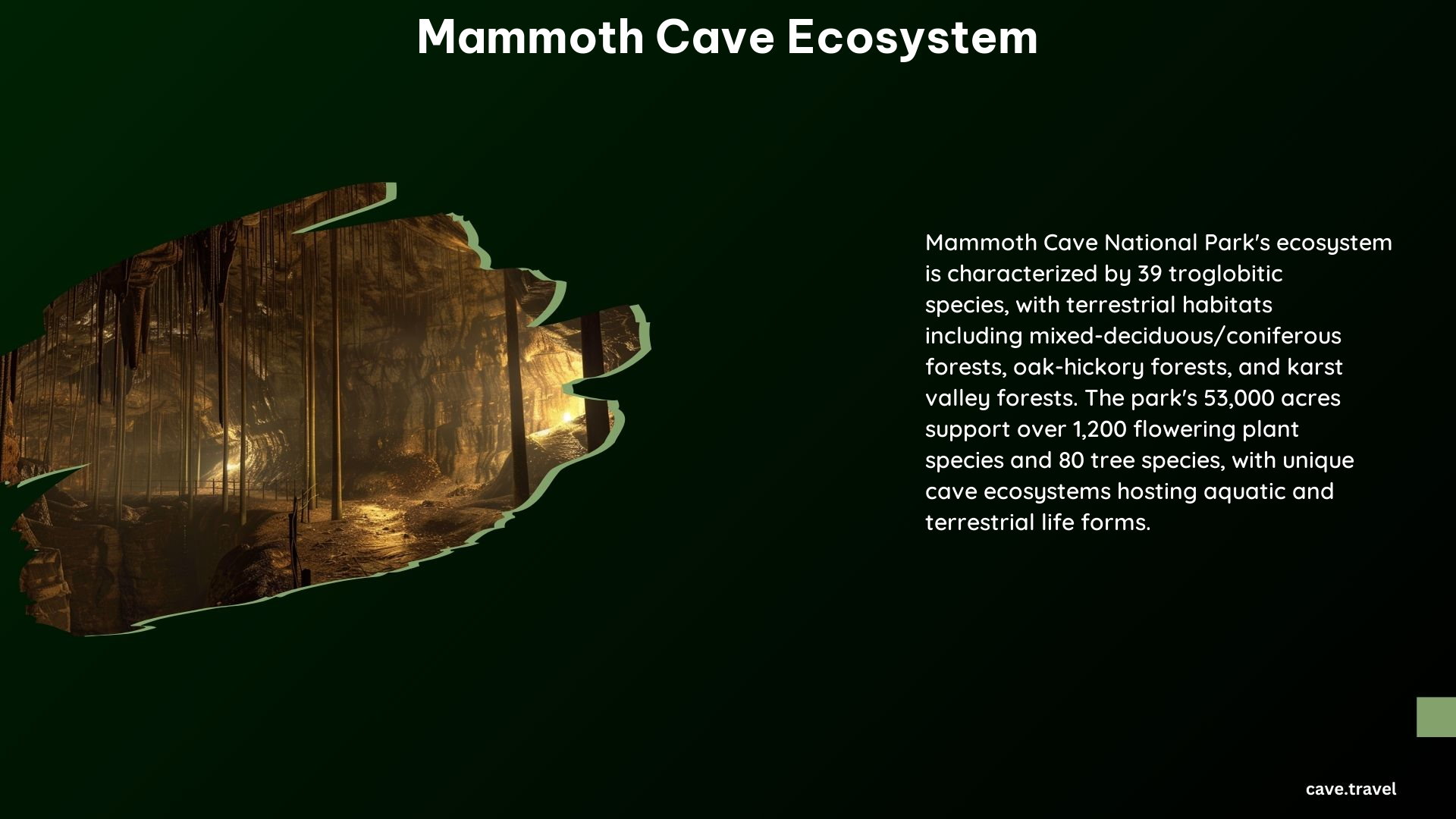The Mammoth Cave ecosystem is a captivating and intricate network of interconnected environments, both above and below ground. This national park in Kentucky showcases a remarkable diversity of life, from the lush surface forests to the mysterious subterranean realms. Explore the unique features and delicate balance that sustain this remarkable natural wonder.
Types of Ecosystems within Mammoth Cave

Mammoth Cave National Park is home to three distinct yet intertwined ecosystems:
Aquatic Ecosystem
The cave streams and rivers within Mammoth Cave support a diverse array of life, including microscopic organisms, invertebrates like isopods and snails, and the elusive cave fish, which reign as the top predators in this subterranean world.
Terrestrial Ecosystem
This ecosystem encompasses the cave inhabitants, such as bats, cave crickets, and woodrats, which venture out to feed and then return to the cave for safety. Their guano and droppings, in turn, support a host of other cave-adapted creatures.
Surface Ecosystem
The park’s surface features a mixed-deciduous/coniferous forest, boasting over 1,200 species of flowering plants and 80 species of trees. This diverse forest can be further divided into sub-types, including oak-hickory forests, karst valley forests, and mesic slope and floodplain forests.
The Role of Geology in the Mammoth Cave Ecosystem

Karst Topography
The park’s distinctive karst landscape, characterized by limestone layers and intricate underground channels, plays a crucial role in sustaining both the surface and subsurface ecosystems. This unique geological feature facilitates the flow of nutrients and water from the surface to the cave depths.
Limestone Layers
The limestone habitat supports unique plant communities, such as the limestone cedar-oak rock outcrop stands, which are adapted to the dry conditions found in this environment.
Interactions Between Ecosystems
Surface-Subsurface Interactions
The karst topography allows for the exchange of nutrients and water between the surface and subsurface ecosystems, supporting a diverse range of species both above and below ground.
Food Chains
In the cave aquatic ecosystem, microscopic organisms feed on dissolved organic matter, which in turn supports invertebrates and fish. Similarly, in the terrestrial ecosystem, the guano and droppings from cave inhabitants support other cave-adapted creatures.
Conservation Efforts
Troglobitic and Stygobitic Species
Mammoth Cave National Park is home to 39 species of conservation concern, many of which have small ranges or are found only within the confines of this remarkable cave system.
Visiting Mammoth Cave National Park
Park Establishment
Mammoth Cave National Park was established in 1941 to protect both the cave system and the surrounding surface ecosystems.
Park Size
The park covers an area of approximately 53,000 acres, providing ample opportunities for exploration and discovery.
Forest Sub-types
The park’s diverse forest can be divided into various sub-types based on the dominant species, including oak-hickory forests, karst valley forests, and mesic slope and floodplain forests.
Mammoth Cave National Park is a true natural wonder, showcasing the intricate and delicate balance between surface and subsurface ecosystems. From the captivating aquatic life to the unique terrestrial inhabitants, this park offers a glimpse into the remarkable diversity and resilience of the Mammoth Cave ecosystem.
References:
- https://www.usgs.gov/geology-and-ecology-of-national-parks/ecology-mammoth-cave-national-park
- https://www.nps.gov/maca/learn/nature/index.htm
- https://www.nps.gov/maca/learn/nature/forests.htm
- https://www.nps.gov/maca/learn/nature/caves.htm
- https://www.nps.gov/maca/learn/nature/ecosystems.htm
